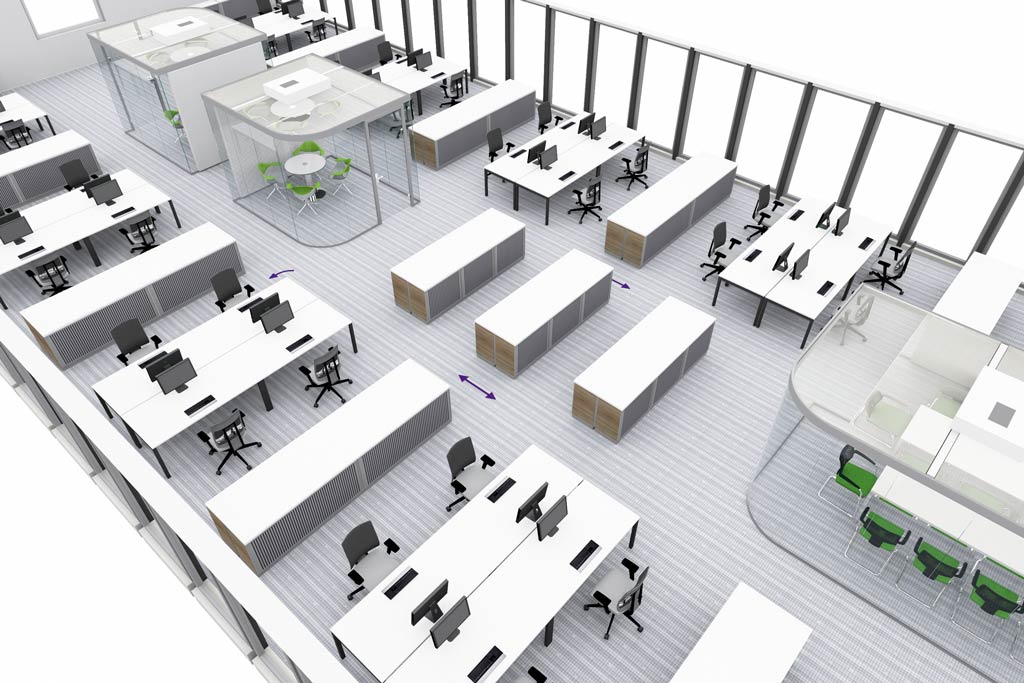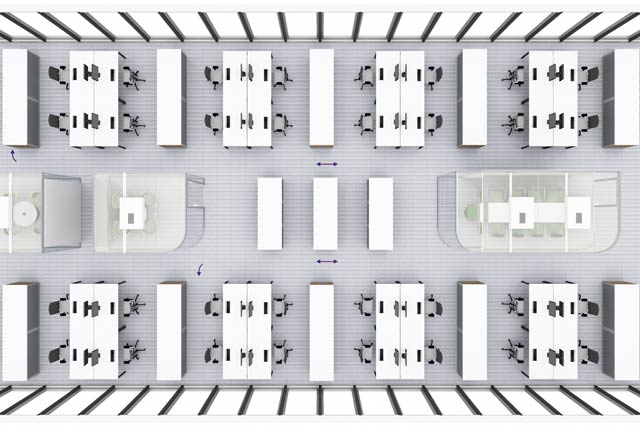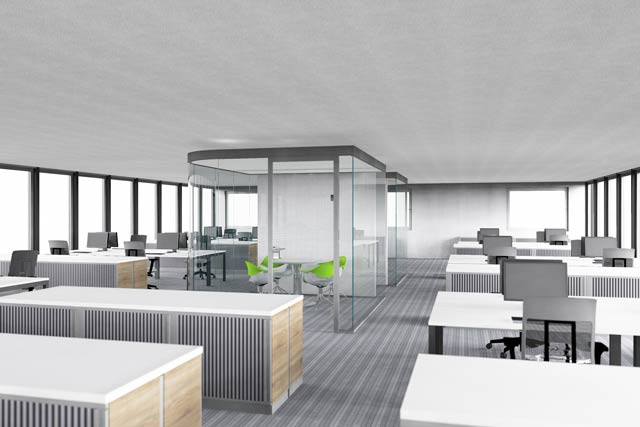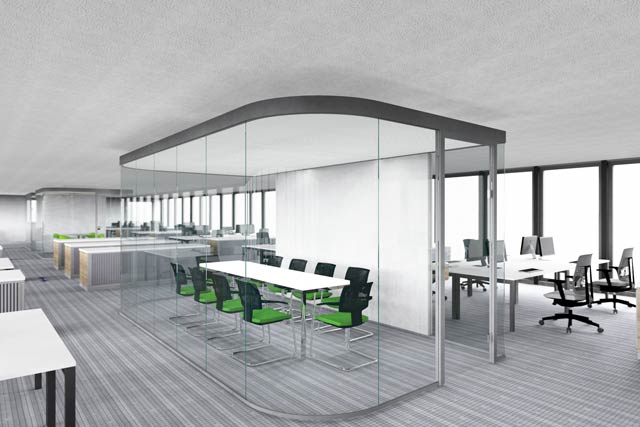
open space
open space is the contemporary name for office spaces that do not require any walls. Enclosed rooms are, if at all, installed for senior employees or conferences. Workplaces are often not only on the facade, but also in the second, third or even fourth row. Open office structures continue to be a trend and there are a number of good reasons for this. Nevertheless, employees approach open space with the greatest reservations. There is a fear that it will be too loud and that people will disturb each other during phone calls. You think you can't find any retreats for teamwork, meetings or special concentration. Ultimately, users often feel like they are being watched.
Avoid settlements that are too deep and use the middle zone
The planners of modern open space concepts avoid overly deep settlements and use the middle zone to represent functions that "spaceless" office space forms cannot represent. These zones are not very popular for workplaces. Think tanks offer retreats here for meetings, breaks or concentrated work Special pieces of furniture, e.g. highboards, provide storage space and serve as locations for ad hoc communication. The office technology can be best accommodated in the middle zone, which is accessible to everyone. Make sure that these areas are acoustically separated from the workstations and can still be seen .




